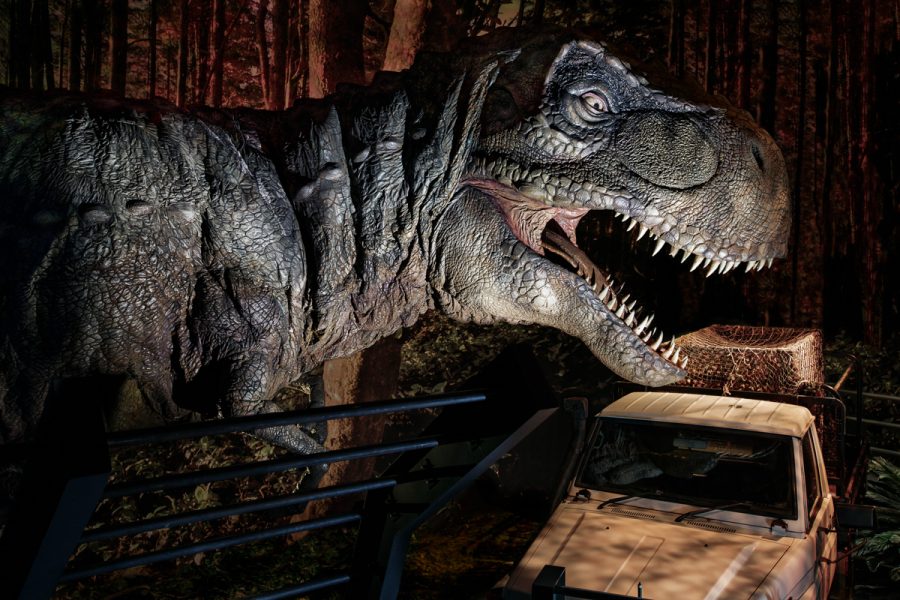Field Museum unveils dino-mite new exhibit
Field Museum unveils dino-mite new exhibit
April 3, 2017
SUE, the most complete Tyrannosaurus rex, towers over viewers at 42 feet long and 600 pounds. Now, imagine the dinosaur blinking, breathing and roaring in front of viewers’ faces.
In “Jurassic World: The Exhibition,” viewers have an up-close and personal experience with prehistoric life. Coming to the Field Museum, 1400 S. Lake Shore Drive, May 26 until Jan. 27, 2018, the exhibit will have guided tours of what scenes and creatures in the Jurassic Park movie franchise would be like in reality.
The exhibit accurately educates visitors about prehistoric life yet is sentimental and thrilling because of its relationship to the Jurassic Park brand, said Jaclyn Johnston, the museum’s public relations director.
“This exhibition is iconic, and there’s a lot of nostalgia around the brand,” Johnston said. “It’s going to be giving people a really entertaining and fun experience seeing these animatronic dinosaurs up close.”
The exhibit will come to life over the next few months. The museum will construct a 16,000-foot tent on its lawn to house it, Johnston said. Created by Universal Studios and Imagine Entertainment, the exhibit immerses fans in the “Jurassic Park” world.
Attendees are transported to Isla Nublar, the dinosaur-ridden island in “Jurassic World,” Johnston said. In the interactive exhibit, they encounter dinosaurs similar to that of the film—brontosauruses, velociraptors and Tyrannosaurus rexes. The creatures are shockingly lifelike, from the way their skin looks to their movements and sounds, she added.
“There’s definitely a lot of points where you’ll be reminded of the film, and it takes you on a similar journey to the last movie,” Johnston said. “You’re taking on the experience the characters in the film are.”
After seeing the exhibit, visitors can then go into the museum and view the fossil collection, Johnston said. The exhibit is not only for entertainment but will also teach the importance of science.
Johnston said she hopes that this educational and interactive exhibition provides the best dinosaur experience and sparks an interest for science.
“We love the idea that it might bring in people who haven’t been to the museum in a while,” she said. “[They] might have fond memories of the film and we can peak their imagination about science.”
Museumgoer Michael Henry, 22, visiting the Field Museum from Kansas City, Missouri, said the new exhibition would especially be beneficial for kids because it offers visuals of a topic they might have learned about in school.
“It’s good for kids because they like to see what’s recreated in their story books,” Henry said. “It’s [beneficial] to see what we think they would [have] lived or moved like when they were back alive.”
Exhibitions like this give people a reference frame for the magnitudes of time and geological change the Earth has gone through for the past 200 million years, said Peter Makovicky, associate curator of paleontology at the Field Museum, specializing in dinosaurs.
“Unless you’re an academic, it’s difficult as a layperson to grasp those magnitudes of time,” Makovicky said. “Conveying that sense of geological histories is more powerful when you have objects before you.”








